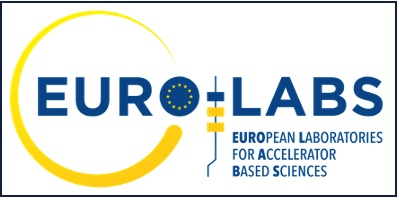Description
The novel gamma-MRI imaging modality should allow the simultaneous exploitation the advantages of SPECT – sensitivity of gamma-ray detection, and MRI –spatial resolution and flexibility. The combination of these techniques relies use gamma-emitting nuclei (like in SPECT) with highly polarized spins, leading to anisotropic emission of gamma-ray, and allowing spin manipulation with rf pulses (like in MRI).
Production of 11/2$^{-}$ spin isomers $^{129m}$Xe (T$_{1/2}$=8.9 days), $^{131m}$Xe (T$_{1/2}$=11.8 days) and $^{133m}$Xe (T$_{1/2}$=2.2 days) is an important aspect of the gamma-MRI project. This contribution will present results of systematic studies of two production routes: at ISOLDE and in nuclear reactors. At ISOLDE, during four beamtimes in 2022 and 2023, we investigated the best production and implantation conditions. We used a UC$_{x}$ with plasma ion source and a cooled transfer line and implanted beams of different Xe isotopes inside the GLM chamber into aluminium and gold foils with and without beam sweeping for seconds and hours. We then compared the number of implanted ions and the activity of the samples determined with ISOLDE gamma detectors to our simulations based on the ISOLDE in-target yields. As a result, we could determine the isomeric ratio for 11/2$^{-}$ to 3/2$^{+}$ states and the total efficiency of xenon extraction from the target. The study allowed us to determine the best conditions to collect high-activity samples (>10MBq) of $^{129m,131m,133m}$Xe.
The second method of $^{129m}$Xe and $^{131m}$Xe production that we investigated in several campaigns between 2020 and 2023, is based on neutron irradiation of highly enriched stable $^{128}$Xe and $^{130}$Xe samples in the high-flux nuclear reactors: RHF reactor at Institute Laue-Langevin (ILL, Grenoble, France) and MARIA reactor in the National Centre for Nuclear Research (NCBJ, Swierk, Poland). We developed and optimised experimental setups for efficient enclosure of stable Xe, extraction and characterisation of the produced xenon isomers. The results show that both reactors provide isomer activities sufficient for the project (>50 MBq) with few unstable contaminants [M.Chojnacki et al, Appl. Radiat. Isot. 205 (2024) 111174] . This poster will give a brief introduction to the gamma-MRI technique and will provide experimental details as well as results of xenon-isomer production at ISOLDE and at ILL and MARIA reactors.
| Work-package | WP2 - RIs for Nuclear Physics |
|---|---|
| Facility identifier | ISOLDE |
